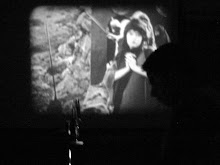I was born in India. My upbringing is entirely Indian. With a bachelor's and master's in mechanical and aerospace engineering, respectively, I decided to come to the US for a Ph.D. in Control Systems Theory. So, engineering really is my main-trade. While engineering only happened in the last eleven years, movies have been a way of life from the day I was born. When I grew up in India, it was hard to ignore cinema.
This may come as a surprise to you but India's first feature film was made in 1911. If you compare that with the history of world cinema, India didn't do too badly. Even more fascinating is that India gained independence from the British Raj in 1947, by which time our first film-maker, Phalke, had made 95 features and 26 shorts and was dead three years! So, Indian cinema is significantly older than Independent India.
Do you know India is a country with thirty, or so, languages? It's not uncommon for two Indians to meet and have no common language except English. In this regard, India has like the the linguistic diversity quite like the European Union. In a country of thirty states, each state speaks a different language, each language has a literature that's hundreds of years old. Do note that by thirty languages I don't mean thirty dialects; they are distinct languages. So, it is natural that the stories told on screen would be in different languages. Growing up, I could follow movies in three Indian languages. Then there were English movies too. I grew up surrounded by movies.
My earliest memories of cinema are in the mid-80's. We had a television at home but there was only one channel. Just imagine, only one channel for an entire country of thirty languages. Every Sunday there would be a feature. Sometimes that feature would be in a language we didn't follow. If you wanted more movies, film theaters were the only way out. So, my parents were notorious for "showing their kids too many films." How could I not fall in love with movies?
Since I have been a student all my life, my approach is that of systematic learning. I guess that's what working towards a doctorate teaches you: being systematic. Having watched movies all my life on video, then Laser Discs, followed by Video Compact Discs, DVD, streaming and finally the Blu-Ray, the only format left was film. But why buy films? There are so many other formats. A new romance was kindled last November. I watched an Indian feature titled Harishchandrachi Factory. Produced in 2009, it is the story of India's very first feature Raja Harishchandra. But where was India's first feature film? Could I somehow get it? No. It was disappointing to learn India had failed to preserve that feature. Whatever I do now, I can never watch India's first feature film. This hurt at first, later a romance for the delicate medium of film was born. I just had to get myself a film projector.
A little research and I understood that small gauge film is the easiest for a beginner. Also, 8mm prints were cheaper. So, I started collecting 8mm film.
I didn't intend to type such a long tale but, you know ...... you start typing thinking you will control the story, that you will keep the story short. But then the story ..... it just takes over. There was a story I read when Swades had released. Apparently, Gowariker and SRK saw the feature once before its premiere. Both agreed that the running time was too long. Both agreed that cuts were necessary before the premiere. Yet Gowariker did not re-edit. Some days later, at the end of the premiere screening SRK, not saying a word, quizzically looked at his director. Gowariker earnestly told him that he didn't have the heart to make any cuts. Like Gowariker's heart was in every frame, mine is in every word.

No comments:
Post a Comment